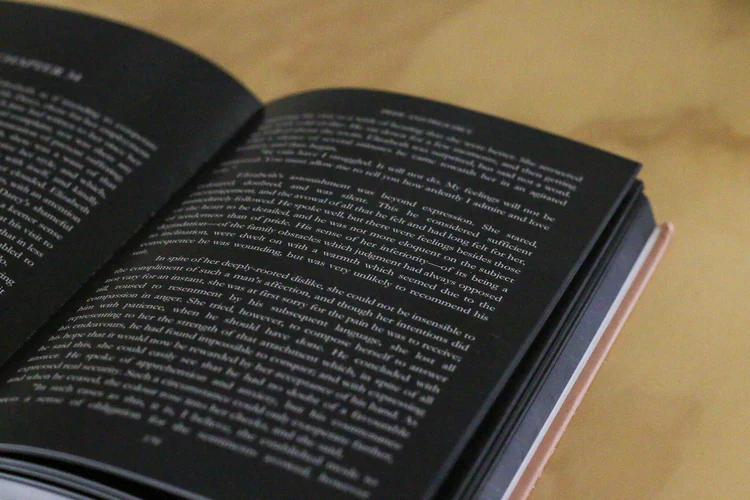For years, we’ve toggled the switch on our screens. From our phones and laptops to our favorite reading apps, “dark mode”—the sleek, eye-friendly interface of light text on a dark background—has become a digital staple. It promises less eye strain, a more immersive experience, and a clean, modern aesthetic. But what happens when this digital-first concept breaks free from the screen and lands on a printed page?
Enter the “dark mode book,” a growing trend in publishing that is captivating readers and designers alike. These aren’t digital files; they are physical books, meticulously printed with white or silver ink on inky black or deep charcoal paper. The result is a reading experience that is both startlingly new and profoundly classic.
More Than Just a Gimmick: The Appeal of the Dark Page
At first glance, it might seem like a novelty. But for a growing number of readers and collectors, dark mode books offer a unique set of advantages that go beyond their striking appearance.
- A New Visual Experience: The most immediate draw is the aesthetic. A dark mode book is an art object. On a shelf, it stands out, a slice of minimalist elegance. When opened, the stark contrast creates a different kind of focus. Instead of a bright white page that illuminates an entire room, the dark page absorbs the light, making the text itself feel like the sole source of illumination. Readers often describe it as a more intimate and less jarring experience, especially when reading in low-light conditions.
- An Immersive Atmosphere: The design choice is rarely arbitrary. Publishers are using this format for specific genres where atmosphere is key. Think of dark fiction, thrillers, sci-fi, or even poetry. The black pages can enhance a book’s mysterious, moody, or futuristic themes, pulling the reader deeper into the world the author has built. A prime example is the UK editions of Matt Wesolowski’s Six Stories series, whose black pages perfectly complement the chilling, true-crime podcast format of the novels.
- The Collector’s Dream: In a world of mass production, uniqueness is a prized commodity. Dark mode books are often released as special or limited editions, making them highly sought-after by bibliophiles. They represent a fusion of traditional bookbinding with contemporary digital culture—a physical artifact of a digital age, making them a must-have for those who appreciate the art of the book.
The Challenges on the Other Side of the Page
Of course, printing on black paper isn’t without its difficulties. The process is more complex and expensive than traditional printing. It requires high-quality, opaque white ink to ensure the text is crisp and legible without bleeding or appearing grey.
There is also a debate about readability. While many users find dark mode easier on the eyes on a backlit screen, the science is less clear for a reflective, printed page. Traditional typography has long held that black text on a white page offers the highest level of contrast and reading speed. However, for those with light sensitivity (photophobia) or certain visual processing disorders, the lower overall brightness of a dark page can genuinely reduce strain.
A Niche or the New Norm?
It’s unlikely that dark mode books will ever replace the creamy white pages we’ve known for centuries. The tradition, cost, and readability of black-on-white are too established.
But they don’t have to. The rise of the dark mode book represents a beautiful evolution in publishing—a willingness to experiment, to blend digital aesthetics with physical craftsmanship, and to create reading experiences that are as visually memorable as the stories they contain. They are a bold statement that, even in the age of screens, the printed book is still finding new and exciting ways to innovate.
So, the next time you see one, don’t just look at it. Pick it up. Feel the paper, see how the light catches the text. You might just find that reading from the void is a surprisingly brilliant experience.









I don’t think the title of your article matches the content lol. Just kidding, mainly because I had some doubts after reading the article. https://accounts.binance.com/register-person?ref=IHJUI7TF